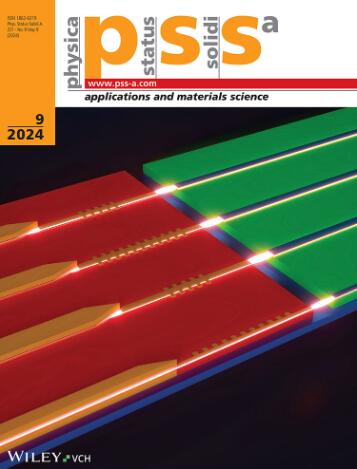Gold Nanoparticle‐Based Sensing of Pesticides and Fertilizers in Aqueous System: A Review
IF 1.9
4区 材料科学
Q3 MATERIALS SCIENCE, MULTIDISCIPLINARY
Physica Status Solidi A-applications and Materials Science
Pub Date : 2024-09-04
DOI:10.1002/pssa.202400439
引用次数: 0
Abstract
The extensive use of pesticides and fertilizers in agriculture has led to significant environmental pollution, particularly in aqueous systems. This review provides an inclusive overview of the advancements in the application of gold nanoparticles (GNPs), specifically for the sensing of pesticides and fertilizers on surface water. The novelty of this work lies in its focused analysis of the unique localized surface plasmon resonance properties of GNPs that enable highly sensitive and selective detection of contaminants on surface water. Various synthesis methods and detection mechanisms are discussed, emphasizing the integration of GNP‐based sensors with modern analytical techniques to enhance detection limits and response time. The review also highlights the significance of monitoring agricultural chemicals in water systems from an environmental perspective. In addition, this review also reveals the potential of GNPs contribution toward sustainable agricultural practices by providing reliable, rapid, and cost‐effective sensing solutions. Future perspectives on the development of GNP‐based sensors, including the fundamental challenges in designing GNP sensors, such as incorporation with other materials, miniaturized and portable sensing devices, and field‐testing validation are also presented.基于金纳米粒子的水体系农药和化肥传感:综述
农药和化肥在农业中的广泛使用导致了严重的环境污染,尤其是在水系统中。本综述全面概述了金纳米粒子(GNPs)在地表水农药和化肥传感方面的应用进展。这项工作的新颖之处在于重点分析了金纳米粒子独特的局部表面等离子体共振特性,这种特性使其能够高灵敏度、高选择性地检测地表水中的污染物。文章讨论了各种合成方法和检测机制,强调将基于 GNP 的传感器与现代分析技术相结合,以提高检测极限和响应时间。综述还强调了从环境角度监测水系统中农业化学品的重要性。此外,本综述还揭示了 GNP 通过提供可靠、快速和具有成本效益的传感解决方案,为可持续农业实践做出贡献的潜力。本综述还介绍了基于 GNP 的传感器的未来发展前景,包括设计 GNP 传感器所面临的基本挑战,如与其他材料的结合、微型化和便携式传感设备以及现场测试验证。
本文章由计算机程序翻译,如有差异,请以英文原文为准。
求助全文
约1分钟内获得全文
求助全文
来源期刊
CiteScore
3.70
自引率
5.00%
发文量
393
审稿时长
2 months
期刊介绍:
The physica status solidi (pss) journal group is devoted to the thorough peer review and the rapid publication of new and important results in all fields of solid state and materials physics, from basic science to applications and devices. Among the largest and most established international publications, the pss journals publish reviews, letters and original articles, as regular content as well as in special issues and topical sections.

 求助内容:
求助内容: 应助结果提醒方式:
应助结果提醒方式:


